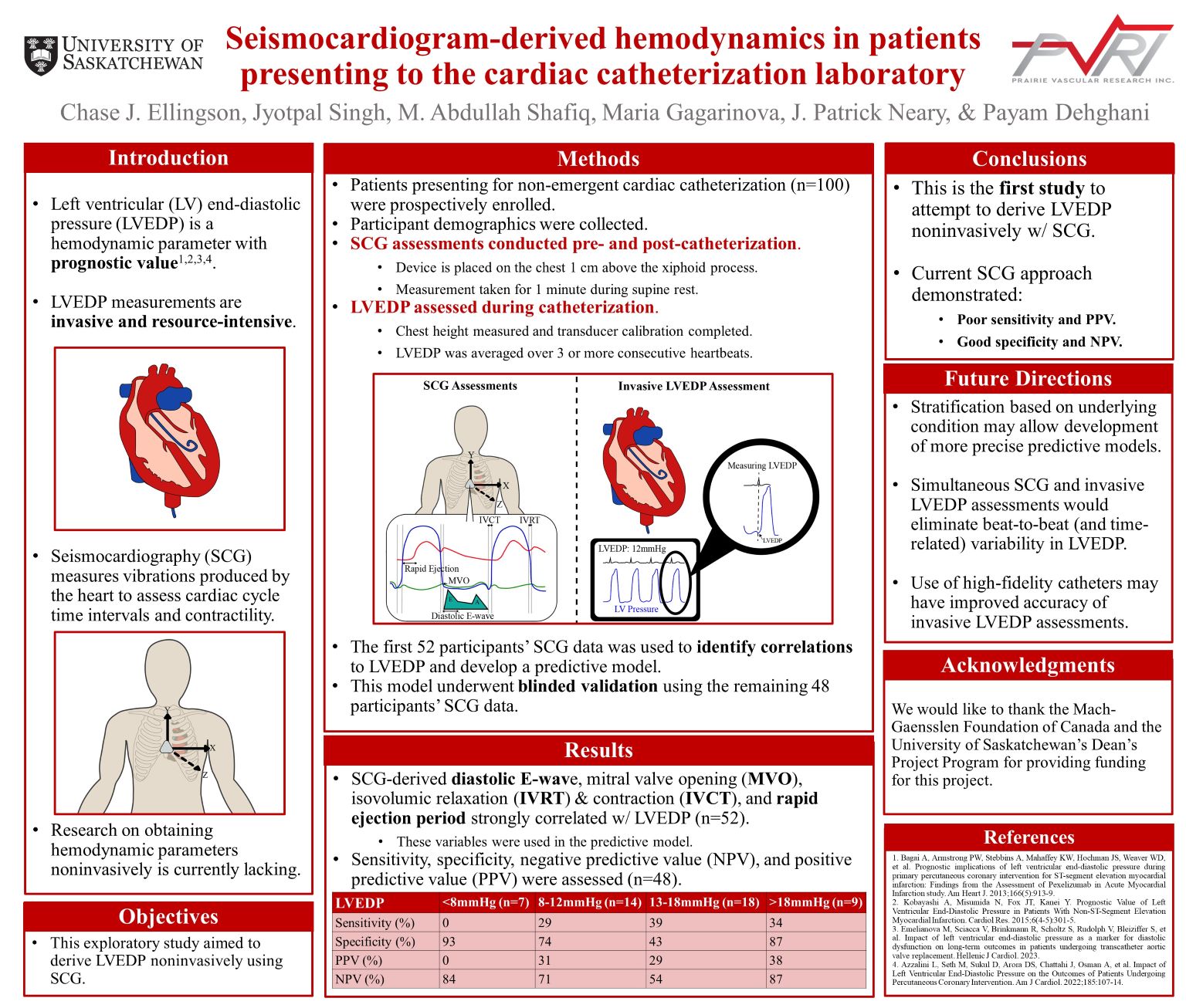
Seismocardiogram-derived hemodynamics of patients presenting to the cardiac catheterization laboratory
Chase Ellingson
Left ventricular end-diastolic pressure (LVEDP), an important hemodynamic parameter, is obtained during cardiac catheterization. Seismocardiography (SCG) measures the vibrations produced by the heart to evaluate cardiac cycle timing intervals and contractility noninvasively. This exploratory study aimed to derive LVEDP noninvasively using SCG.
Patients presenting for non-emergent cardiac catheterization (n=100) had LVEDP assessed during cardiac catheterization and completed a one-minute SCG measurement before and after catheterization. A predictive LVEDP model was developed using the first 52 participants' SCG data, which underwent validation using the remaining 48 participants.
The SCG-derived diastolic E-wave, mitral valve opening, isovolumic relaxation and contraction, and rapid ejection intervals were used to predict LVEDP. For LVEDP intervals of <8mmHg, 8-12mmHg, 13-18mmHg, and >18mmHg, the negative predictive value was 84, 71, 54, and 87, respectively. For the same intervals, specificity was 93, 74, 43, and 87, respectively. However, sensitivity and positive predictive value were poor.
This is the first study to demonstrate high specificity and negative predictive value for deriving LVEDP using SCG in a blinded analysis. However, considerable variability in our results suggests more research with a larger sample size is needed. This research provides a theoretical framework for future efforts to obtain hemodynamic parameters using SCG.
